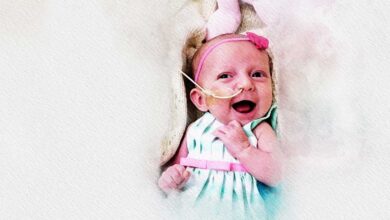Sterilization and Infection Control
The basic steps to ensure patient safety

Sterilization and infection control are the cornerstone of patient and medical staff safety within the hospital environment, which is what hospitals and medical facilities have been working on in the past years to ensure that they are infection-free. In addition, international certificates of accreditation place sterilization and infection control at the very top of their priority list before granting accreditation to any institution.
For that purpose, infection control departments have been established in hospitals that work to implement specialized programs aimed at preventing or stopping the spread of infection among patients and hospital staff, through the application of a set of policies, guidelines and preventive measures.
For instance, standard procedures based on risk assessment and personal protection methods are used to protect healthcare providers from infection and prevent cross-contamination, while seeking to apply various methods that provide a clean infection-free environment.
Hospitals are keen to follow the guidelines set by international authorities such as the World Health Organization, the Joint Commission International and other global and international authorities concerned with infection control and patient safety in hospitals. In this dedicated department, employees are trained and educated on how to apply the best healthcare practices and improve the correct medical practices. The Infection Control Department also aims at keeping the hospital clean and germ-free, while having sterile devices and tools, by selecting materials that have been globally tested to sterilize medical equipment and tools.
The goal is to ensure staff safety and to provide a clean infection-free workplace through regular examinations, preparing periodic reports and conducting monthly laboratory swabs, in addition to striving to provide state-of-the-art technologies, supplies and special means that help prevent the spread of infection.
Regular handwashing is one of the most effective ways to prevent the spread of germs. Clean hands can stop germs from spreading from one person to another and throughout an entire community—from your home and workplace to childcare facilities and hospitals.
The use of gloves is also fundamental and should not be considered an alternative to performing hand hygiene. Hand hygiene is required before putting on gloves and immediately after removal. Gloves should be changed between tasks and procedures on the same patient and should be removed immediately after a procedure and hand hygiene performed so as to avoid contaminating the environment.
These are among the most important procedures stipulated in global health policies and implemented by hospitals to ensure the continuity of obtaining the global healthcare accreditation certificate. Hence, infection control in hospital departments is a top priority and of utmost importance and is applied in accordance with several procedures and policies within the best practices and international standards in order to ensure security and safety of patients and hospital staff, and enhance the patient’s trust in the healthcare system.
Since any hospital worker may be exposed to infection, there is an infection control work methodology that relies on several pillars, namely risk assessment and control, setting policies and procedures to prevent its spread and providing infrastructure that ensures safety for high-risk procedures, in addition to focusing on mainstreaming policies and procedures with the aim of upgrading the staff experience to reduce risks within performance indicators that conform to the highest international levels through infection monitoring systems and identification of the most severe health conditions.
Smart Sterilization Robots for Patient Rooms
Smart robots are increasingly advocated as a simple solution for the immediate disinfection of rooms and spaces of all surfaces in one process and as such they seem attractive to hospital management. However, disinfection robots do not replace manual cleaning but complement it.
Robots have been successful in cleaning and sterilizing hospitals, which was fundamental during the coronavirus pandemic, as hospitals are increasingly adopting robots that are able to kill germs, viruses and bacteria as well as sterilize rooms in a few minutes.
The robot is the latest advanced technology solution for safe sterilization in a way that ensures a safe experience for patients and medical staff in all departments and facilities. The robot can navigate around a room and thoroughly sterilize the entire operating room in record time (no more than seven minutes) without the need for human intervention.
The UV robot has the ability to move automatically and ensures greater and better coverage of high-contact areas. The robots use ultraviolet-powered sterilization whilst scanning all rooms and corridors in its facilities. Each robot can complete exhaustive sterilization of a room in no time. Moreover, the robots provide 360-degree coverage and can repeat the same process with high accuracy several times.
The smart sterilization robot is like a revolutionary innovation in the world of safe sterilization. UV-disinfection robots offer a no-touch technology, delivering disinfection by irradiation of effective intensity to kill microorganisms in operating rooms, ICUs, outpatient clinics, hospital corridors, etc.
Cross-infection prevention
Handwashing is the most important preventive measure against cross-infection. Medical professionals follow special procedures to help prevent infections. Aseptic technique is a common process used to sterilize equipment so harmful microorganisms can’t spread from patient to patient.
Wearing gloves helps protect both patients and healthcare workers from infection. Gloves help keep your hands clean and lessen your chance of getting germs that can make you sick. Healthcare workers should wear gloves every time they touch blood, bodily fluids, bodily tissues, mucous membranes, or broken skin. They should wear gloves for this sort of contact, even if a patient seems healthy and has no signs of any germs.
Hand hygiene is described by many healthcare workers as the single most important tool in preventing the spread of healthcare-associated infections between patients. The five moments of hand hygiene outlined by WHO are: Before patient contact; before aseptic task; after bodily fluid exposure; after patient contact; and after contact with patient surroundings.
Workers in operating rooms, including surgeons, assistants and others, should wash their hands and forearms with an antiseptic soap for 3-5 minutes before touching the patient.
Healthcare Apparel
Healthcare apparel is also part of sterilization; employees can usually wear their normal clothes under their white scrub. But in special departments such as ICUs and operating rooms, uniform pants and a short-sleeved gown are required for men and women, and these clothes are made of an easy-to-wash material. The uniform should also be changed after exposure to blood or if it became wet through excessive sweating or exposure to other fluids.
Other basic hygiene procedures include ensuring all staff have access to single-use disposable gloves, making sure all staff can easily access hand washing facilities or hand sanitizer and safe disposal of clinical waste, blood and other body fluids. The healthcare worker should assess the level of risk of splashes or sprays of blood or body fluids, and secretions or excretions involved in the procedure being undertaken and wear appropriate apparel, ie. plastic apron, gown, mask, goggles, face shield.
All healthcare workers must take precautions to prevent injuries caused by needles, scalpels and other sharp instruments or devices. The adoption of safe work practices and correct disposal is incumbent on all who use sharps. The maintenance of a safe environment for patients incorporates the basic requirement that the area a patient is nursed in, and equipment used on the patient is hygienically clean.
















